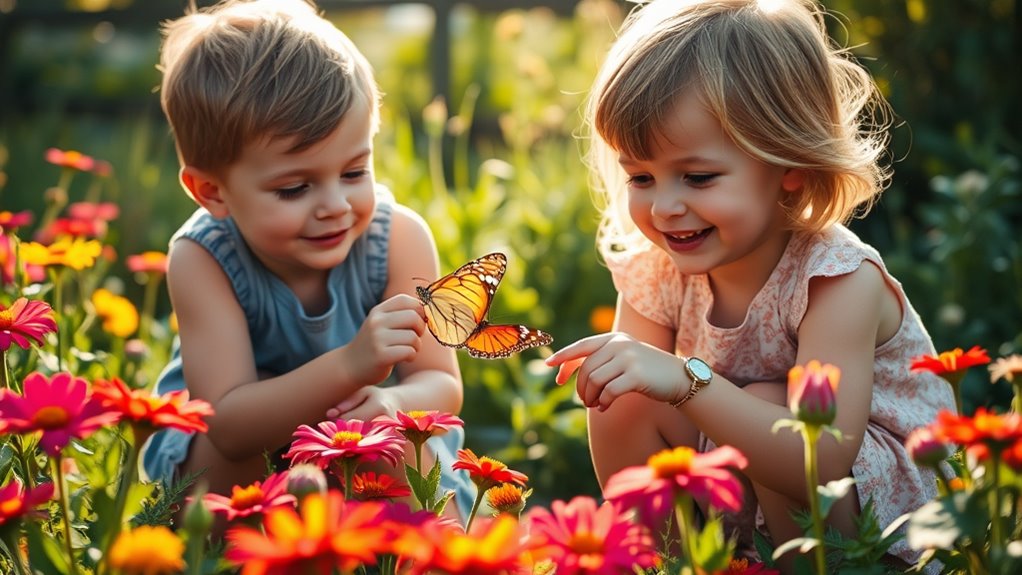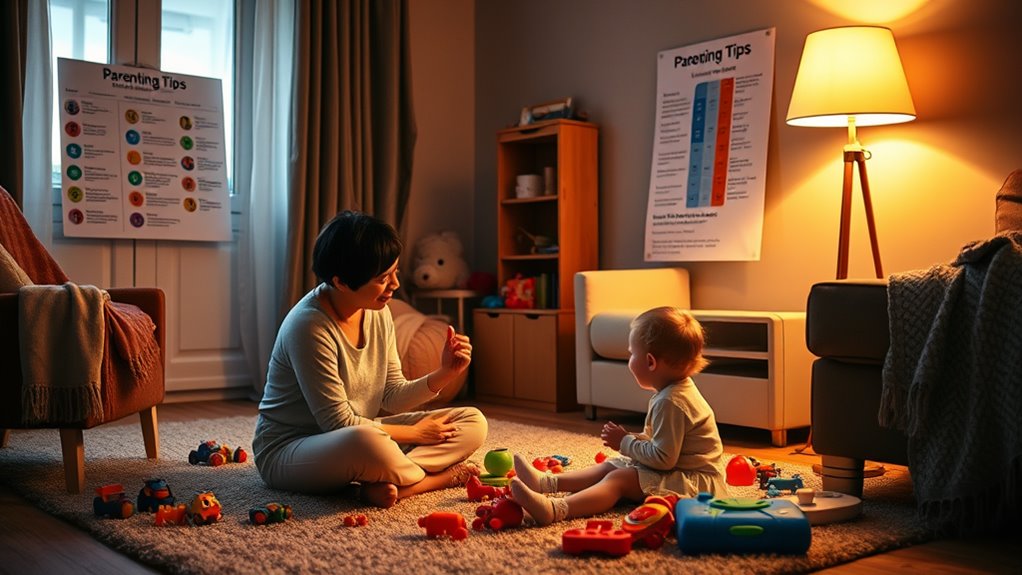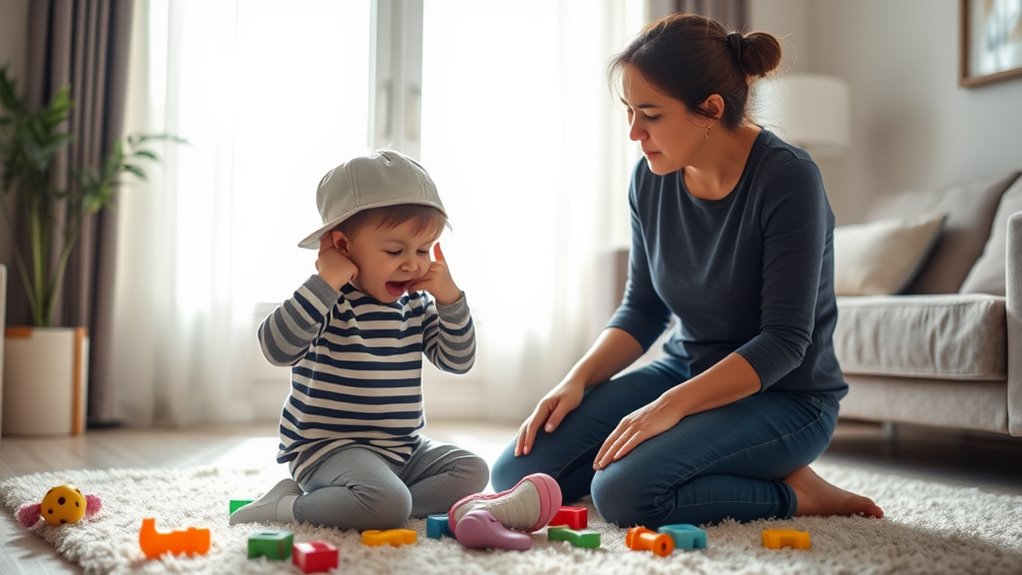The Power of Gratitude- Teaching Kids to Appreciate the Little Things
Teaching your kids the power of gratitude helps them appreciate life’s little joys. You can start by encouraging daily practices like gratitude journaling, where they note down three things they’re thankful for. Setting up a gratitude jar can also be a fun way for them to reflect on positive moments. Incorporate simple rituals, like sharing what they’re grateful for during family meals. Creative activities, like making a thankful tree, can spark their imagination while deepening their understanding of appreciation. As they embrace gratitude, you’ll find even more ways to enrich their experience and perspective in life.
Key Takeaways
- Engage kids in gratitude journals to regularly note things they appreciate, fostering a habit of recognizing positivity in their lives.
- Create a thankful tree activity where children can express appreciation through colorful paper leaves, making gratitude visual and fun.
- Organize gratitude art projects that allow kids to creatively express what they are thankful for, enhancing their emotional connection to gratitude.
- Encourage family discussions about gratitude entries, helping children articulate their feelings and understand the impact of appreciation on their well-being.
- Establish daily rituals, like sharing what each family member is thankful for during meals, to reinforce a culture of gratitude at home.
Understanding Gratitude and Its Benefits
Gratitude’s power can transform your child’s outlook on life, fostering a sense of appreciation for both big and small things. When kids learn to recognize what they’re thankful for, it significantly boosts their emotional intelligence. They start to understand their feelings and the feelings of others, creating deeper connections with friends and family.
This appreciation cultivates a positive mindset. Instead of focusing on what they lack, they learn to celebrate what they have. This shift in perspective can lead to improved mental health, reducing feelings of envy or dissatisfaction. When your child actively practices gratitude, it can also enhance their resilience, helping them bounce back from setbacks more effectively.
Moreover, fostering gratitude in your child’s life can encourage them to be more empathetic. They begin to see the value in kindness and generosity, recognizing the impact their actions can have on others.
As they grow, this foundation can lead to a more fulfilling and meaningful life. Ultimately, instilling gratitude lays the groundwork for emotional intelligence and a positive mindset that will benefit your child throughout their life.
Simple Practices to Foster Gratitude
One effective way to cultivate gratitude in your child’s life is through simple, everyday practices that can easily be incorporated into your routine. Start by introducing gratitude journals. Encourage your child to write down three things they’re thankful for each day. This small act can help them focus on the positive aspects of their lives, fostering a deeper appreciation for what they have.
Another great practice is writing thank you notes. Whether it’s for birthday gifts, kind acts, or simply to express appreciation to family and friends, these notes teach your child the importance of acknowledging others. Set aside time together to craft heartfelt messages, allowing your child to reflect on the importance of gratitude in their relationships.
You can also create a gratitude jar. Have your child write down things they’re thankful for on slips of paper and place them in the jar. Over time, they’ll enjoy looking back at all the positive moments.
Incorporating Gratitude Into Daily Life
Incorporating gratitude into daily life doesn’t have to be complicated; small, intentional actions can make a big difference. One effective way to start is through gratitude journaling. Set aside just a few minutes each day for you and your kids to jot down three things you’re thankful for. This simple practice helps shift focus from what’s lacking to what’s already present, fostering a positive mindset.
You can also create appreciation rituals. For instance, at dinner, take turns sharing one thing that made you smile that day or something you’re grateful for. This not only encourages reflection but also strengthens family bonds as you celebrate each other’s joys.
Consider setting reminders—perhaps a gratitude jar where family members can drop notes of appreciation throughout the week. At the end of each month, read them together.
These small, consistent practices can cultivate a culture of gratitude in your home. Remember, it’s not about grand gestures; it’s about recognizing and appreciating the little things in life, making gratitude a natural part of your daily routine.
Creative Activities for Kids
Through engaging creative activities, kids can express their gratitude in fun and imaginative ways. One great activity is creating a gratitude journal. Encourage your child to decorate the cover with drawings or stickers that represent things they’re thankful for. Each day, they can write or draw something new, helping them to focus on the positives in their life.
Another fun idea is to make a thankful tree. You can set up a bare branch in a vase and cut out colorful paper leaves. Have your child write or draw things they appreciate on each leaf, then hang them on the tree. This visual representation will serve as a beautiful reminder of their blessings and can become a cherished decoration in your home.
You can also organize a gratitude art project, where kids can create collages or paintings that reflect what they’re thankful for. These activities not only nurture creativity but also help kids develop a habit of recognizing and appreciating the little things in life.
Encouraging Reflection and Discussion
To foster a deeper appreciation for gratitude, encouraging reflection and discussion is essential. Start by introducing gratitude journaling into your family routine. Set aside a few minutes each week for everyone to jot down things they’re grateful for. This practice not only helps kids recognize the positives in their lives but also opens the door for meaningful conversations.
After journaling, create a space for family discussions. Ask your kids about their entries and why they chose those specific things. This dialogue reinforces their feelings of gratitude and allows them to articulate their thoughts. You might be surprised at the insights they share!
Encourage them to reflect on how these moments of gratitude impact their daily lives. Questions like, “How did that make you feel?” or “Why is that important to you?” can lead to deeper understanding.
Frequently Asked Questions
What Age Should I Start Teaching Kids About Gratitude?
You can start teaching kids about gratitude as early as two or three. At this age, they’re reaching developmental milestones that help them understand early experiences, making it a great time to introduce appreciation.
How Can Gratitude Practices Benefit Adults as Well?
Did you know that 94% of people who practice gratitude journaling report feeling happier? By incorporating mindfulness practices, you can enhance your emotional well-being, reduce stress, and cultivate a more positive outlook on life.
Are There Any Cultural Differences in Expressing Gratitude?
When you explore gratitude expressions, you’ll notice cultural practices vary significantly. Some cultures emphasize verbal thanks, while others focus on gestures or acts of service, showcasing diverse ways people appreciate and acknowledge kindness in their lives.
Can Gratitude Improve Mental Health in Children?
Absolutely, gratitude can significantly improve mental health in children. By practicing gratitude journaling, you help them build emotional resilience, allowing them to better navigate life’s challenges and cultivate a positive outlook on their experiences.
How Do I Encourage Reluctant Kids to Express Gratitude?
Encouraging reluctant kids to express gratitude’s like planting seeds in a garden. Try gratitude games or creative journaling; they’ll make the process fun and engaging, helping your kids discover joy in appreciating life’s little moments.





